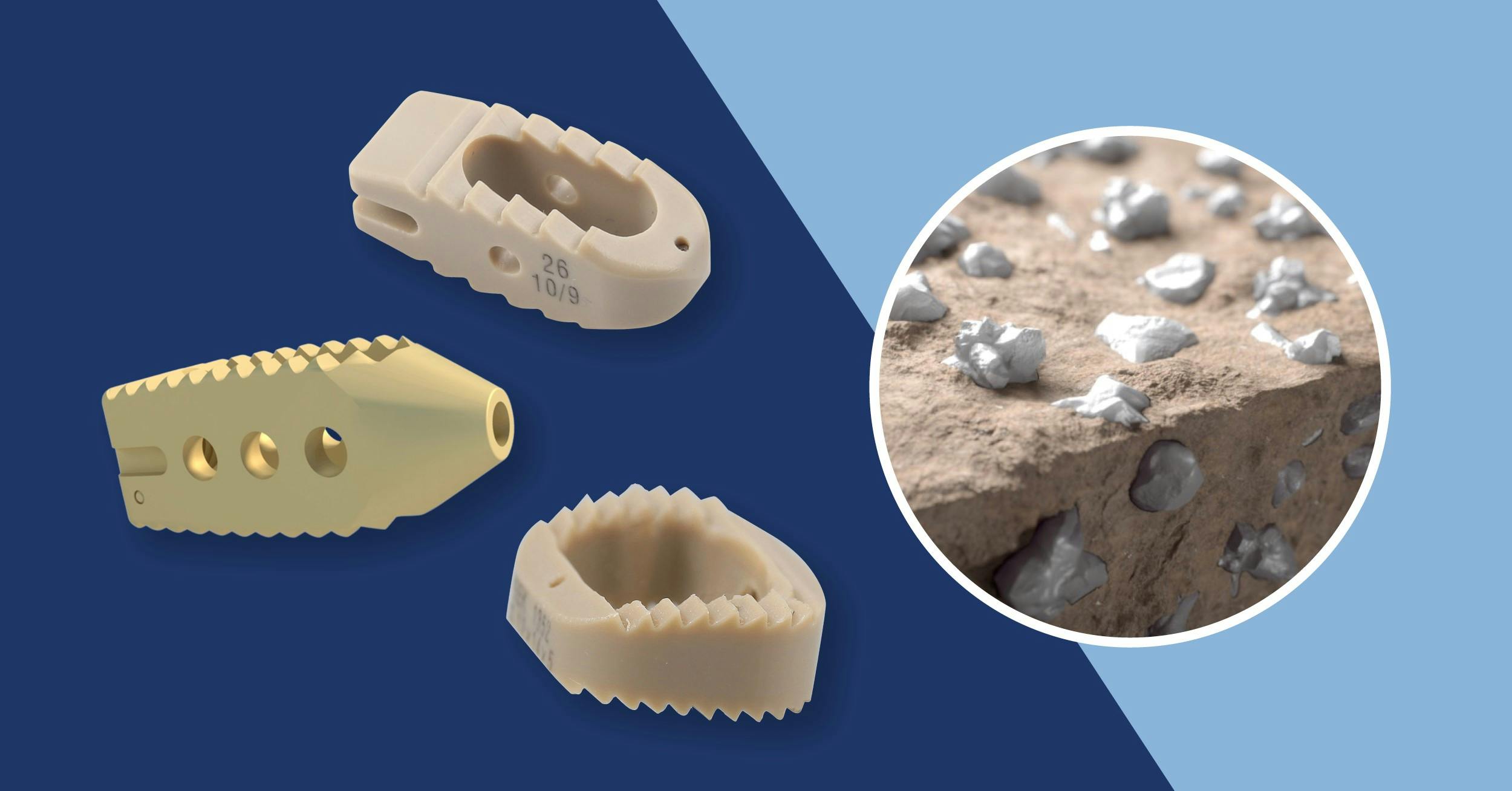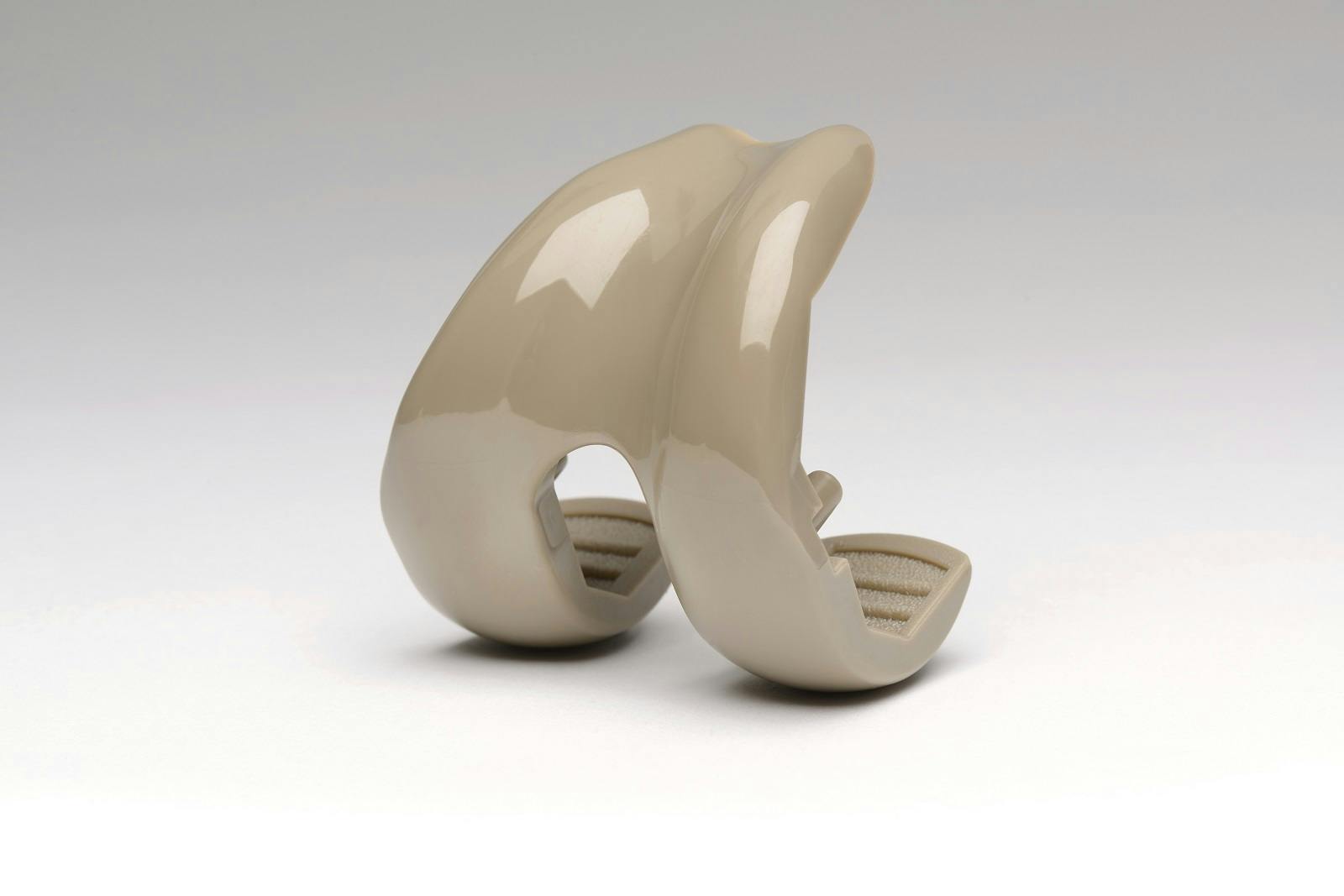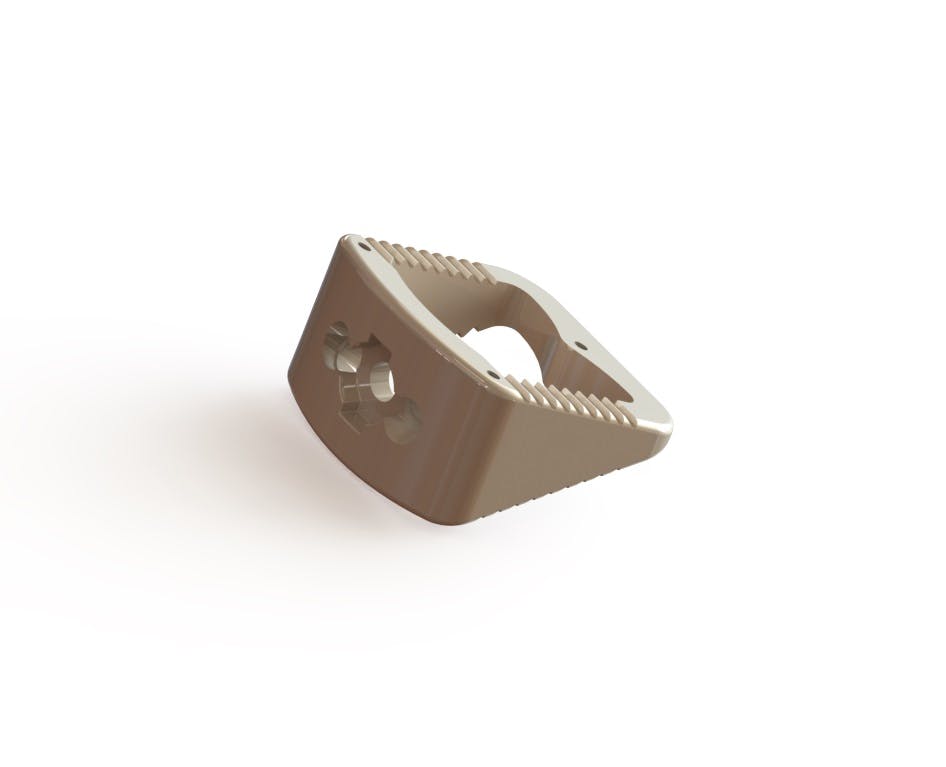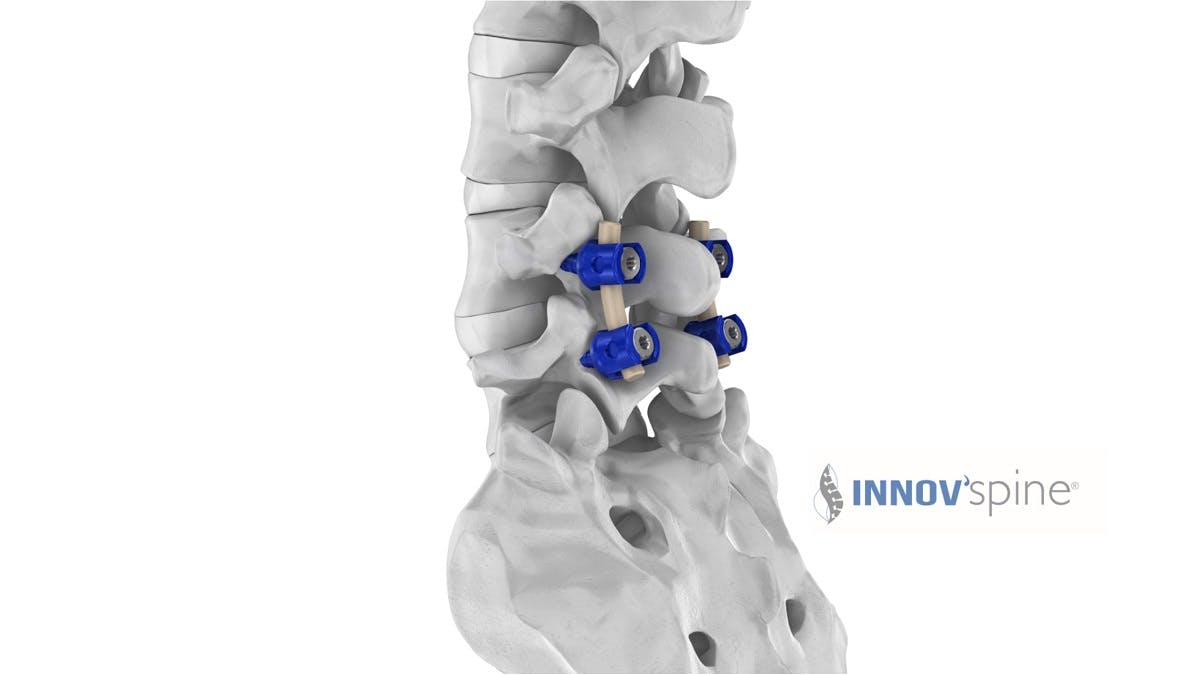Thornton Cleveleys (UK) – Polymeric spinal rods provide a bridge between rigid all-metal spinal implants and more dynamic therapeutic options. Adopting this "bridging" approach, France-based Innov'spine, a leading specialist in innovative solutions for spinal surgery, is offering a new PEEK-polymer rod system in its VEOS product line. The new rods are made of PEEK-OPTIMA™, an implantable polyetherether-ketone (PEEK) polymer available from Invibio Biomaterial Solutions ("Invibio"). A notable feature is the use of polyaxial screws – previously, systems were only available with monoaxial screws. These new rods, which originate as a semi-finished product from Invibio, have gained CE mark approval for their use in Europe, a further signal that PEEK-polymer spinal implants are now widely recognized, within the medical profession, as the therapeutic option of choice.
“PEEK-polymer solutions for interbody spinal fusion are now the medical-technology leaders. The exceptionally versatile PEEK-OPTIMA has a modulus close to that of human bone, and this allows it to be a natural bridge between very rigid metal implants, such as the titanium constructs, and more dynamic approaches,” commented Dr. Thierry Desjardins, Neurosurgeon (Cagnes-sur-Mer, France). In fact, PEEK-polymer implants offer numerous benefits, including radiolucency, which of course metals don't allow, while retaining the stability of titanium."
Spinal rods composed of metal have been used successfully for many years. They are, however, not a perfect solution. Breakage and loosened screws can occur and result in accelerated degeneration at adjacent spinal segments. The high stiffness inherent in all-metal implants is believed to contribute to these clinical challenges and their subsequent negative impact on patient outcomes.1, 2 In response, surgeons have indicated that enhanced flexibility, within a range of rod stiffness, would be beneficial for patients.2
In addition, health systems would also benefit from this innovative and cost-effective solution, which is able to assist in reducing the number of patients with Adjacent Segment Diseases (ASD). According to a study, the treatment of patients with ASD following lumbar fusion results in significantly higher costs. These costs are related to hospital admission, surgery, imaging and total direct costs, and add up overall to nearly US$17,000.3
Polyaxial screws: new option for surgeons
Importantly, the new PEEK-OPTIMA polymer-rod system from Innov'spine supports the use of a polyaxial-type screw. Previously only monoaxial screws had been available for spinal-rod implants, but polyaxial screws enable better alignment of the screw head with the rod, helping to avoid pre-stressing and damage to the rod. Biomechanical testing has in fact demonstrated that the thermoplastic spinal-rod components maintain better screw purchase,4 reduce screw movement and avoid potential screw pull-out and implant failure.4, 5
The new spinal-rod components offer a compelling combination of strength and flexibility that significantly reduces the range of motion2, 6 and stabilizes the treated segment,7 while allowing adequate physiological movement in adjacent upper and lower segments.6 In addition, clinical results increasingly suggest that PEEK-OPTIMA spinal-rod components can preserve adjacent discs or at least slow their degeneration.8
"Increasingly spinal surgeons are adopting polymer implants made of Invibio´s novel PEEK-OPTIMA polymer. The European CE mark granted to our new rod system with polyaxial screws is also a clear indicator that the new solution bridges existing treatment gaps," said Fabrice Paccagnella, Founder - General Manager at Innov'spine. "Use of polymer spinal implants decreases stress at the extremely critical interface of bone and screw. This effectively protects adjacent levels and offers an alternative solution that lies between a completely rigid system, on the one hand, and a too-dynamic system on the other. This approach optimizes long-term stability and the prognosis for a positive therapeutic outcome."
For more information please visit www.bridgethefusiongap.com and www.innovspine.com
1. Highsmith JM, Tumialan LM, Rodts Jr. GE. (2007). Flexible rods and the case for dynamic stabilization. Neurosurgical Focus, 22, 1-5.
2. Gornet, Matthew F., et al. (2011). Biomechanical Assessment of a PEEK Rod System for Semi-Rigid Fixation of Lumbar Fusion Constructs. Journal of Biomechanical Engineering, 133, 1-12.
3. Cost and Quality of Life Implications of Adjacent Segment Disease Following Lumbar Fusion.
Vincent J Alentado BS (Case Western Reserve University School of Medicine), Daniel Lubelski, Andrew T Healy MD, Jacob A. Miller BS (Cleveland Clinic Lerner College of Medicine), Douglas Orr, Michael P. Steinmetz MD (Center for Spine Health), Edward C. Benzel MD (Cleveland Clinic Foundation), Thomas E. Mroz MD (Cleveland Clinic - Neuroscience Institute). Abstract of the 2015 Annual Meeting of the AANS/CNS Section on Disorders of the Spine and Peripheral Nerves, March 4–7, 2015,
DOI: 10.3171/2015.3.FOC-DSPNabstracts
4. Galbusera F., et al. (2010). Rigid and Flexible Spinal Stabilization Devices: A Biomechanical Comparison. Medical Engineering & Physics, 33, 490-496.
5. Greene, et. al. Photoelastic Analysis of the Full-field Stress Distribution Induced by a Spinal Implant Construct. Poster #746 presented at the 2011 Orthopaedic Research Society Annual Meeting.
6. Comparison of polyetheretherketone rod system to traditional titanium rod fixation. The Spine Journal, 9, 263-267.
7. Turner JL., et al. (2010). The mechanical effect of commercially pure titanium and polyetheretherketone rods on Spinal implants at the operative and adjacent levels. Spine, 35(21), E1076-E1082.
8. Athanasakopoulos M, et al. Posterior Spinal Fusion Using Pedicle Screws. ORTHOPEDICS. 2013; 36: e951-e957. doi: 10.3928/01477447-20130624-28.
Invibio™, a Victrex plc company, is a global leader in providing high performance biomaterial solutions to medical device manufacturers. The company provides PEEK-OPTIMA™ polymers, advanced technical research and support and manufacturing of components for spine, trauma and orthopaedic medical segments for the development of long implantable medical devices. Today, Invibio’s PEEK-OPTIMA™ polymers are used in more than five million implanted devices worldwide.
Victrex, headquartered in the UK, is an innovative world leader in high performance polymer solutions focused on the Aerospace, Automotive, Electronics, Energy and Medical markets. Every day, millions of people rely on products or applications which contain our polymers, from smartphones, aeroplanes and cars to oil & gas operations and medical devices. With over 35 years’ experience, we are delivering leading edge solutions to shape future performance for our customers and our markets, and to drive value for our shareholders. Find out more at
https://www.victrexplc.com/




